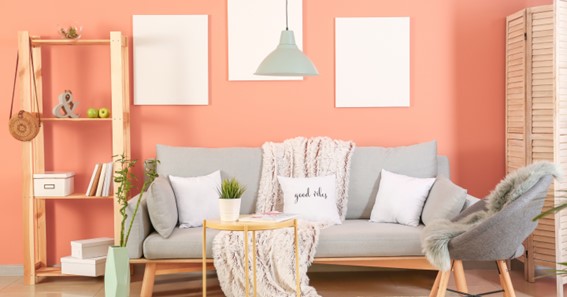Choosing the right colour scheme for your home is essential in creating the desired ambiance and enhancing the overall aesthetic appeal. Whether renovating, redecorating, or moving into a new space, selecting the perfect colour combination can make a significant difference.
This article will explore eight effective ways to choose home colour schemes that will help you create a visually pleasing and harmonious living environment.
Let’s take a look at these ways.
-
Consider the Mood
When choosing a colour scheme for your home, consider the mood you want to evoke in each room. colours do have a powerful impact on our emotions, so selecting shades that align with the desired atmosphere is crucial. For example, warm tones like reds and yellows create an energetic and vibrant atmosphere, while cool hues like blues and greens promote relaxation and tranquility.
-
Gather Inspiration
Before finalising your home’s colour scheme, gather inspiration from various sources. Browse through interior design magazines, websites, and social media platforms like Pinterest and Instagram to explore different colour combinations. Pay attention to images that resonate with your personal style and preferences. Save or create a mood board to visualise how different colours work together.
-
Consider Natural Light
The amount of natural light in a room can significantly influence the way colours appear. Take note of how much sunlight each room receives throughout the day. If a room is flooded with natural light, you can choose bold and vibrant colours as they will be beautifully showcased. Opt for lighter shades in rooms with limited natural light to create an illusion of brightness and openness.
-
Choose a Dominant Colour
Selecting a dominant colour is a fundamental step in determining the overall colour scheme for your home. This colour will set the tone and serve as the primary hue in each room. Consider factors such as personal preference, the purpose of the room, and its size when choosing the dominant colour. Neutral tones like beige, grey, or white are versatile options that provide a timeless and sophisticated look.
-
Use the colour Wheel
The colour wheel is a powerful tool for understanding the relationships between colours. It includes primary, secondary, and tertiary colours. colours that are opposite each other on the wheel, known as complementary colours, create a strong contrast. On the other hand, analogous colours, which are located next to each other, create a more cohesive and harmonious effect. Use the colour wheel to guide your selection and create a balanced and visually appealing colour scheme.
-
Consider Existing Furniture and Decor
When choosing a home colour scheme, consider your existing furniture and decor. Consider the colours and patterns of your larger furniture pieces, such as sofas and rugs, and ensure that the chosen colour scheme complements or contrasts them pleasingly. You can create a cohesive and well-coordinated space by considering the existing elements.
Click here – What Is Bottom Growth?
-
Test with Samples
Before committing to a specific colour scheme, test it out by obtaining paint or fabric samples. Apply the samples on the walls or hold them against the furniture and decor to see how they interact with the existing elements. Natural & artificial lighting can affect the way colours appear, so evaluate them under different lighting conditions to ensure they meet your expectations.
-
Seek Professional Advice
If you need help choosing the right home colour scheme, consider seeking advice from a professional interior designer or a colour consultant. These experts have an eye for design & can help you select colours that align with your vision while considering the practical aspects of your home. They can provide valuable insights and suggest colour combinations you might not have considered.
Conclusion
Selecting a suitable home colour scheme involves careful consideration of the mood you want to create, gathering inspiration, understanding the impact of natural light, choosing a dominant colour, using the colour wheel, considering existing furniture and decor, testing with samples, and seeking professional advice if needed.
By following these eight effective ways, you can create a visually pleasing and harmonious living space which reflects your personal style and enhances the overall ambiance of your home.






